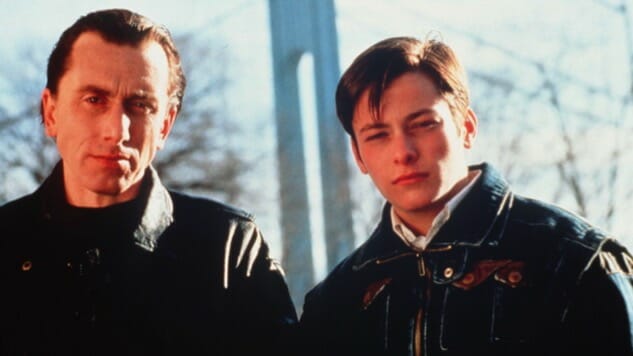
One of the great questions of the modern movie moment is why James Gray—a Russian-Jewish child of New York City, a graduate of USC’s prestigious School of Cinematic Arts and a Silver Lion winner at 25—hasn’t been talked about more. When discussing American cinema’s preeminent auteurs, people often namedrop Tarantino, the two Andersons, the Coen Brothers, Steven Soderbergh and others, but Gray’s name crops up relatively infrequently. And that’s a shame, because this man can make movies.
Visually, Gray’s films tower above most of their contemporaries, opting for elegant compositions over the Hollywood habit of disregarding mise-en-scène. Thematically, his films transcend typical narrative trappings to become deeply personal works that draw on his ethno-cultural heritage and the city he called home, a tendency that has resulted in works with a vivid sense of place. In these respects, Gray deserves to be mentioned alongside Scorsese and Francis Ford Coppola, two other filmmakers who, in the ’70s, entered the filmmaking pantheon by telling formally beautiful, emotionally rich tales of immigration, crime and New York City.
With The Lost City of Z expanding nationwide on Friday, we thought we would try to bring Gray more fully into the conversation by looking back on the movies he’s directed. Though just five films large at this point (his most recent film excluded), Gray’s oeuvre boasts a unity and assuredness lacking from most filmographies triple its size. See for yourself by giving this list a read, and, more importantly, by watching the films discussed, for words cannot do justice to the beauty of Gray-ian cinema.
Little Odessa (1994)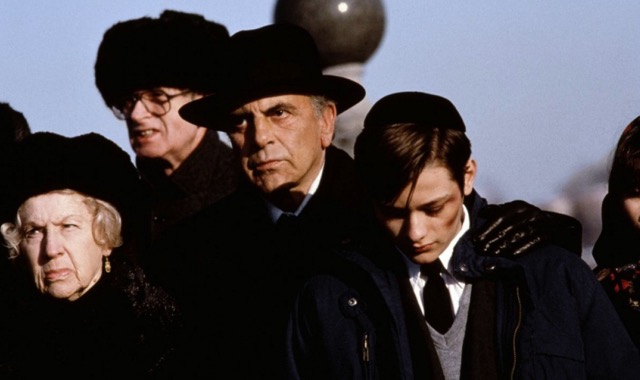
As a micro-budget, early-career gangster picture with religious undertones and a felt sense of New York City, Little Odessa brings to mind Scorsese’s Mean Streets, except its tone aligns more with that of The Godfather. Taking a mournful, cathartically serious approach to exploring the intersection between crime and the immigrant experience, Gray’s astonishing directorial debut surges with feeling in ways lacking from many modern pictures that favor ironic distance over undistilled emotion. Little Odessa is the kind of film where close-ups of faces are joined by a haunting choral refrain—of the kind you might hear in temple or church—to create an almost confessional intimacy that entreats us to look beyond the image to what lies in the characters’ hearts, beyond the brutality and indignity of the everyday to how these broken individuals seek transcendence and deliverance from their pain-filled lives.
In surveying the emotional wreckage of a family torn apart by abuse and resentment, Little Odessa chooses lamentation over condemnation, compassion over judgment. We are made to understand that, though Joshua, the wayward older son in a family of Russian Jewish immigrants in Brighton Beach, works as a hitman for the mob, he loves his dying mother and his doting younger brother Reuben. Similarly, though Joshua’s father is shown to be abusive and unfaithful, the film reveals that the former tendency arises from a genuine (if poorly expressed) desire to raise upright sons—and the latter from an understandable (if not excusable) yearning for intimacy, given that his wife cannot reciprocate his love due to her deteriorating mental and physical condition.
As the characters’ bad decisions and dysfunctional attempts at reconciliation propel the plot toward tragedy, Gray and cinematographer Tom Richmond tell a parallel narrative through the film’s images. Those close-ups are part of Little Odessa’s virtuosic visual storytelling, but so is the film’s beautiful use of offscreen space to articulate the futility of the characters’ fantasies; elsewhere, an extreme long shot is deployed to show how distant a stable, normal life is for Joshua. One of the film’s most haunting shots uses low-angle lighting to illuminate a junkyard-set murder scene, such that the killer is perversely wreathed in an angelic glow that aligns with the exalting gaze of a hidden onlooker. Meanwhile, the will-be victim cowers in darkness, soon to be discarded like the refuse around him. In the film’s climax, this cinematographic expressionism is replaced by handheld immediacy—along with a striking disappearance of all music from the soundtrack—in a way that marks a powerful shift from the retrospection and anticipation of earlier scenes to the present-tense violence of Joshua’s haunted past catching up with him.
The assuredness with which Little Odessa shifts tonal and stylistic registers to accommodate narrative indicates the confidence and vision of the film’s director, who, at just 25 when the film was released, proved himself to be a filmmaking force to be reckoned with. Since then, he has lived up to expectations.
The Yards (2000)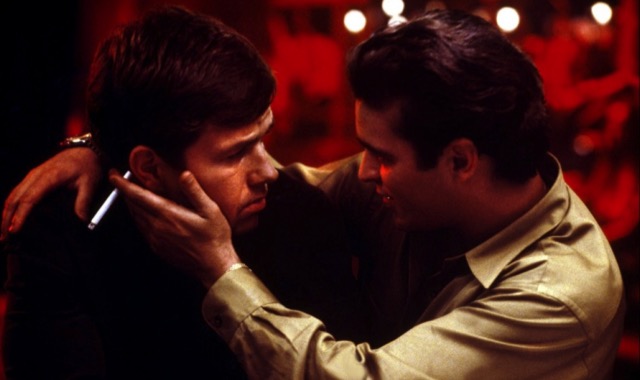
Resonances of The Godfather continue into Gray’s sophomore feature, except rather than observing gangsters who are so powerful and multifarious in their dealings that the details of the milieu are often overwhelmed by the metaphorical implications of it all, The Yards focuses on a highly specific context: the New York City railroad business and the underbelly of crime that keeps it afloat. This is not to say that the film lacks mythic weight: the central story of jealousy and betrayal between a couple of friends, rendered with Gray’s usual flair for the melodramatic, possesses the kind of tragic grandeur that harks back to Shakespeare, and the film’s juxtaposition of the business elite with the criminal labor holding their empires together belongs to a long tradition of institutional critique and class commentary in cinema.
Still, it is ultimately the particularities of The Yards that stick in the mind. From the tactility of the industrial, dirt-and-iron railway yard, to a raging, crimson-colored rave scene that articulates desire through gazes and wordless movements, Gray’s film is filled with details that distinguish it from the genre norm, and not only at the level of cinematography. As a wrongly accused man running with a bad crowd, Mark Wahlberg delivers a cipher-like performance that, when contextualized by plot, communicates a deep-seated emotional pain of a kind too seldom written into the characterization of gangster-movie tough guys.
No, The Yards isn’t perfect. It’s a bit too preposterous in parts, and the final stretch peters out rather than swells. Still, from the images, to the performances, to the sense of place, to the as-yet unmentioned area of pacing, which results in moments of phenomenal suspense and others of moving contemplation, enough stands out in the film to make it clear that, coming off of the success that was Little Odessa, Gray had not lost his touch.
We Own the Night (2007)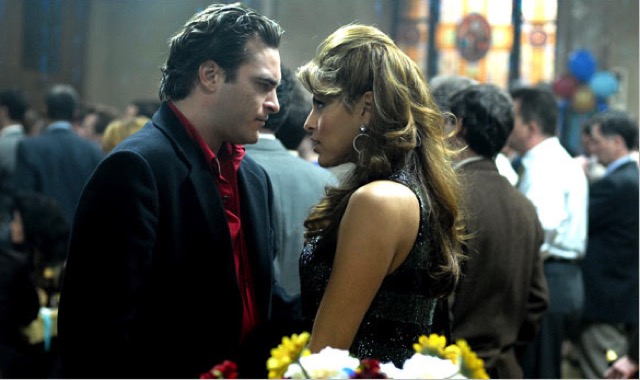
For Exhibit A on how a bad screenplay can tear gaping holes in an otherwise strong film, look no further than We Own the Night, James Gray’s ode to brothers of both blood and badge that squanders its potential when the story goes off the deep end around the two-thirds mark. It’s a real shame, because there is a lot of good here—so much so, in fact, that even when the narrative is beset by spasms of distracting subplots, preposterous developments and unsatisfying resolutions, the overall film still doesn’t feel like a dud.
When We Own the Night works, chief among its strengths is a sense of place and patience, the latter of which is ironic given that haste and poor pacing are precisely what undoes the film in the home stretch. Cut out the movie’s final half hour, however, and you’d be left with an impressively measured crime thriller, one that isn’t afraid to decelerate to a crawl in order to soak in things like the ambience, the gradual onset of danger and the expressions on characters’ faces. Similarly paced films often feel like they’re spinning their wheels during a slow-down, and while We Own the Night is not entirely immune to this, there are carefully modulated details that keep us engaged even during the lull: the tortured inferiority complex writ large in the mannerisms of Joaquin Phoenix’s prodigal son Bobby; the lullaby-like score that evokes the ginger way in which we touch newly acquired wounds; and the dim, yellow-sepia color palette suggesting both the nostalgia in the filmmaker’s gaze and the gaudy excesses of the world in his sightline.
When the film finally does slam on the gas, it roars. One such scene is literally a car chase, set during a downpour with the camera staying largely within one of the vehicles. Here, simple realism in sound design—noises outside the car sound muffled, whereas the passengers’ screaming overwhelms the soundtrack—aligns us powerfully with the characters’ panicked perspectives, and the resulting action scene, though brief, shreds the nerves in ways chases these days seldom do. Another scene tracks a mole as he infiltrates a mobster’s drug den. There, the dazed terror caused by coursing adrenaline and breathing coked-up air is evoked through the ringing on the soundtrack, which, like tinnitus or the ceaseless whine of a dog whistle, disorients us in near-imperceptible ways.
Shortly after these scenes, we experience disorientation of a less welcome kind, as the film’s hard-earned gravitas dissipates in the face of ludicrous plotting. Still, Gray’s directorial panache pays off, tempering the bitterness of disappointment with aftertastes of greatness.
Two Lovers (2008)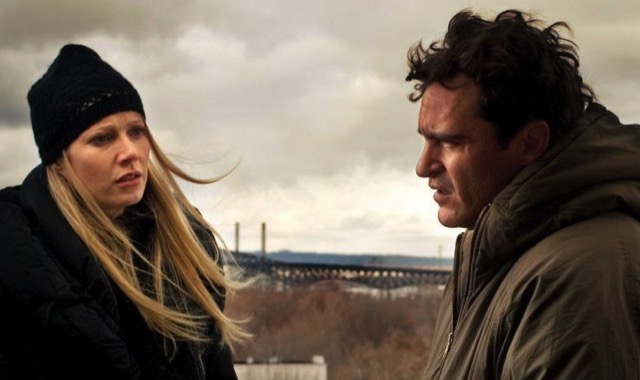
There is no mafia in Two Lovers, no assassinations or car chases, but this tale of competing affections, Jewish heritage and the chilly, lights-and-concrete beauty of New York City is very much a James Gray joint. Joaquin Phoenix returns with another layered, tortured performance (the guy can act—let’s give him an Oscar already), this time playing Leonard Kraditor, a lonely man still recovering from the trauma of his fiancée’s abandonment. Diagnosed with bipolar disorder and bearing a history of suicidal behavior, Leonard has been taking the loss very hard, which in turn makes the sudden appearance of a potential path forward, the charming girl-next-door Michelle (Gwyneth Paltrow), seem that much more alluring. The problem is, Leonard’s parents want him to date Sandra (Vinessa Shaw), the daughter of a potential business partner with whom Leonard’s father wants to be on good terms. Mediating this tripartite romance is the unspoken but significant factor of Jewishness; the film goes to great lengths to showcase the shared culture between Sandra’s and Leonard’s families during their first dinner together, whereas later moments pointedly ask us to link the aloofness of Leonard’s parents toward Michelle with the fact that she doesn’t know what a dreidel is.
In navigating the dynamics of this love triangle, Gray strikes a difficult balance between melodrama and subtlety, ultimately achieving the best of both. The former is most apparent in the tear-streaked faces and desperate lovemaking, the moving soundtrack and intimately candid conversations. As is typical of Gray-ian cinema, Two Lovers marches boldly into sentimentality, showcasing deeply vulnerable characters and a belief in pure and intense emoting as a viable form of artistic expression.
That said, seldom does the film’s radiant emotion come at the cost of psychological realism or character nuance. In a brilliant narrative maneuver, Gray fleshes out Michelle’s character instead of continuing to treat her as an unattainable ideal for Leonard—the kind that so many other, inferior romance films would have made unavailable just so that the hero would eventually learn to love the substantive, “grounded” girl or guy that had been in front of their eyes the whole time. The choice of whom to love in Two Lovers is much harder (as is often the case in life) because both we and Leonard come to see that both Michelle and Sandra are appealing people, inside and out.
That said, the movie further complicates even this realization, questioning the ways in which we often romanticize even the supposedly genuine “interiority” of a person, such that who we think they might, in fact, still merely be who we want them to be. And as the film’s devastating finale suggests, emotion itself, the raw material for everything that had happened in the film up until that point, is a fickle thing that, if not kept in check, could result in a future of suffering.
The Immigrant (2013)
The Immigrant may be Gray’s magnum opus, and not least because it feels huge. The sky looms darkly, bodies jostle each other in shit-streaked streets and tenements tower like prison walls, embodying the reality of immobility that underlies the American Dream. In filming this painstaking recreation of 1920s Manhattan, Gray opts for widescreen—long, expansive shots that reveal a classical eye for framing and blocking of the kind that is sorely missing from the bulk of modern American cinema. To watch The Immigrant is to time travel not only narratively but formally and aesthetically, with aesthetics encompassing the film’s powerful performances. As the sinister pimp Bruno, Joaquin Phoenix channels his inner Brando, while Marion Cotillard, her face a landscape of sorrow and often appearing in close-up, reaches even further back into film history to tap the spirit of silent cinema’s greats—specifically, Maria Falconetti from The Passion of Joan of Arc, another woman of faith forced into a place of spiritual crisis.
The camera’s intimate caress of Cotillard’s face feels like an unlikely companion to the scope of the film’s milieu-building, and yet this variation in scale is central to The Immigrant’s beauty. The cinematographic oscillation between epic and personal parallels the film’s overall attempt to represent both the early twentieth century, Polish-American immigrant experience in all its vastness and the story of Ewa, one such immigrant who turns to prostitution to earn bribe money that could save her sister from deportation. It’s no accident that the film, amidst telling Ewa’s story, hints at the immigrant status of Ewa’s co-workers, expanding our sense of the filmic world to include the tales untold in the movie’s two-hour runtime (when watching the film, an illuminating exercise is to consider whom the “immigrant” of the intentionally ambiguous title actually refers to). On the other hand, neither does the movie sacrifice depth for breadth, thanks in larger part to Cotillard’s extraordinary performance, which transcends type by lending a manneristic specificity to Ewa.
When The Immigrant does turn to type, however, it does so supremely. Talking to The Hollywood Reporter in 2013, Gray shared that his film was inspired by the opera Il Trittico, and indeed, there are moments in the movie that draw on archetypal genres, modes and settings to create a powerfully evocative experience. Bruno’s cabaret, for instance, is primarily a prurient cesspool, but, at points, it also taps the whirligig romance of theater à la Marcel Carne’s Children of Paradise, especially when Jeremy Renner’s knight errant figure appears to form the final corner of a love triangle. The film’s attention to the lives of scoundrels feels vaguely Dickensian, while the mixing of socio-historical authenticity with grand, timeless melodrama evokes the likes of Les Misérables.
And then there is the film’s showstopping final stretch, which joins the ranks of cinema’s great films about religion in the breathtaking surge of introspection, confession and prayer that takes place, building toward the finest closing scene and shot of Gray’s career thus far. From within the agony and suffering, grace has emerged, and with it, a light on the distant shore.
![]()
In a film industry where genuine creativity is too often straitjacketed by commercial incentives, it is becoming increasingly rare to find an “auteur” who lives up to their title, who uses the screen to project an idiosyncratic voice and realize a personal vision. It is even rarer to find an artist who does all this compellingly. Thus, when a filmmaker like James Gray comes along, you hold onto him tightly. You watch and study his movies, which, despite featuring some of today’s most bankable stars, foreground the fact that, rather than adhering to the studios’ whims, the man behind the camera is telling stories that actually matter to him. And, to tell these stories, Gray turns to image as well as pen, crafting films that don’t merely visualize the screenplay, but feel genuinely cinematic, giving careful consideration to framing, editing and composition. Amidst the Hollywood status quo where stories are formulaic and images are functional, Gray stands out like a diamond in a sea of coal. We would be fools not to recognize his value.
Jonah Jeng is a writer and soon-to-be film studies Ph.D. candidate whose work has been featured in The Film Stage, Taste of Cinema and Film Matters Magazine. For him, joy is found in the company of loved ones, the enchantment of cinema and the wholesale consumption of avocado egg rolls.